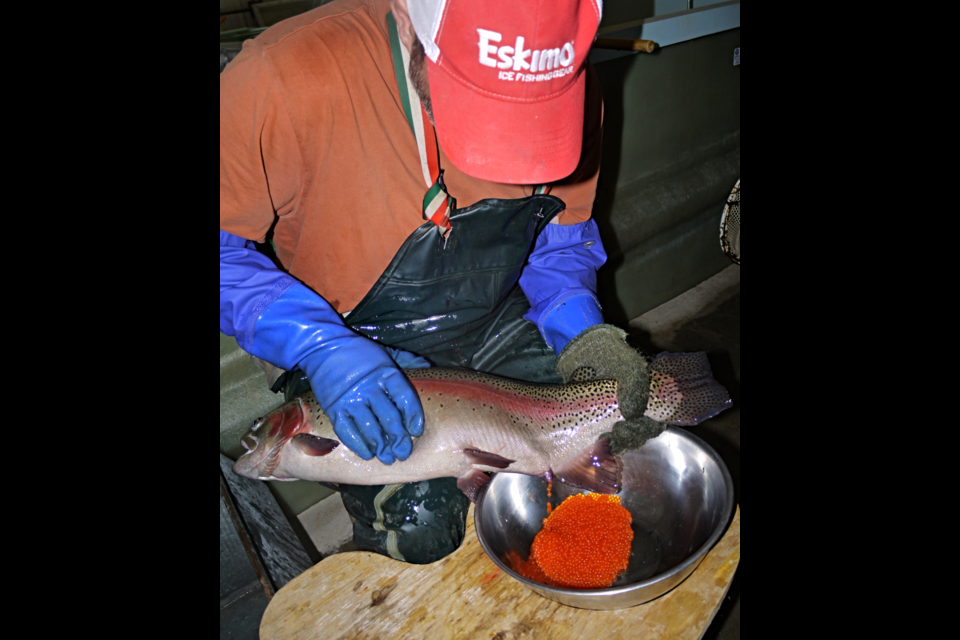The Fort Qu’Appelle Fish Culture Station, Saskatchewan’s Provincial Fish Hatchery, began its annual trout spawning season this October by collecting the eggs and milt (sperm) from its rainbow, brown and brook trout brood stock.
“Prior to spawning, the trout soak in a bath of anesthetic,” explained Rachel Birns, Program Support at the Fort Qu’Appelle Fish Culture Station. “Once unconscious, hatchery staff remove the eggs and milt from the fish by rubbing their bellies. The anesthetic minimizes stress to the fish.”
Then some tender care is required.
“The eggs and milt are stirred together with a feather to begin the fertilization process,” explained Birns. “A feather is soft, and will not damage the eggs.”
Once fertilized, trout eggs are incubated in well water for six-seven weeks.
“After hatching, the trout fry will be raised over the winter months at the Fish Culture Station before being released into waters at the fingerling stage (3-6 months old),” said Birns.
The Fish Culture Station, originally established in 1915, also hatches and stocks an average of 10-15 million walleye each year. In 2019, 10 million walleye and 500,000 trout were released into provincial waters.
“The annual fish stocking plans are developed by fisheries biologists from Saskatchewan’s Ministry of Environment,” said Birns. “It is the job of the Fish Culture Station staff to produce and stock the fish to meet provincial program requirements each year.”
The facility is administered by the Saskatchewan Wildlife Federation. Operating costs are covered by Saskatchewan’s Fish and Wildlife Development Fund (FWDF). The FWDF now receives 30 per cent of the revenue generated from all fur, hunting and angling licenses sold in Saskatchewan.
The 2019 Stocked Waters Guide, which lists the waters, locations and species of fish released last spring and summer, is now online and can be accessed by following this link:
http://publications.saskatchewan.ca/?fbclid=IwAR3Ixl3qH-F3VS5gmeg0RIk0nWvtBVhiLDbw6p-CoanvipQ7FW7UA3DDnlo#/products/102844
For updates on the happenings at the Fish Culture Station feel free to follow their Facebook page.



